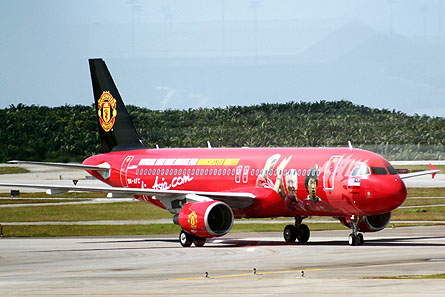British football teams engaged in this season’s European club competitions have had their carbon footprints for travel ranked.
The estimates are released by an online betting company, whom The Energyst has chosen not to name, not least because it failed to use SI metric units.
Manchester clubs, located in Britain’s reputedly rainiest city, are the nation’s highest carbon emitters, as clubs take to the air in search of European glory.
United, long absent from Premiership silverware, top the carbon emitters’ league by some distance, obliged as they are to fly 8,544 miles to Europa League destinations such as Cyprus’ Nicosia and Tiraspol of Moldova.
With Spain’s Real Sociedad rounding off their travels, Erik ten Hag’s team are estimated to be looking at total carbon emissions of 58,731.03 lbs across their EL group stage alone, or 19,577.01 lbs per trip.
Devilish, not least in the light of the club’s termination in February of its nine-year sponsorship by Russian airline Aeroflot.
Arch-rivals Manchester City are a distant second to United on the notional emissions ladder, thanks to Guardiola’s side being scheduled to travel only half the distance of their neighbours.
City’s trips to Copenhagen, Dortmund and Seville in the superior Champions League competition will still see them produce 47,308.1 lbs of CO2 emissions, as the Sky Blues emit carbon at altitude, in quest of the elusive trophy.
Estimates for all clubs assume flights to each away fixture for a squad of 30, including players and back-up staff such as physios.
Chelsea sit third in the table, as they anticipate visits to AC Milan, Dinamo Zagreb and RB Salzburg. Graham Potter’s side will produce “approximately” – it says in this media release – 46,630.0261 lbs of carbon emissions during the group stages of the Champions League.
West Ham’s Europa Conference campaign places them fourth in the CO2 emission table. The Irons will blow bubbles – alarmingly dense in the problem gas, when produced by humans – on the way to opponents in Belgium, Norway and Romania.
Not much separates Spurs and Arsenal – [ apart from two goals at the Emirates on my birthday, weeps the Ed ] -, with Tottenham travelling just 58 miles more than the Gunners.
Fighting an unexpected seven year itch, Liverpool rank last, with Klopp’s side producing 12,653.72667 lbs – give or take a decimal place – of Co2 emissions per trip, thanks to away days at easily reached Rangers and Ajax.
The Glasgow and Amsterdam destinations potentially expose the Reds of Anfield to the low carbon vagaries and unpredictability of troubled loco operators Avanti West Coast.
Train services between Liverpool and Amsterdam are theoretically available to Klopp’s men, provided the club and fans are prepared to Kop a four-hour Eurostar out of the Netherlands back to Kings Cross, then beseech Avanti West Coast at Euston if they’d be so kind as to consent to run a service back to Merseyside.
All that, subject to the RMT, ASLEF and other unions not declaring October 26 or 27 strike days.
Full findings of the research can be read here.
English soccer’s most sustainable club by a country mile is Forest Green Rovers FC, owned by Ecotricity’s boss, the green entrepreneur Dale Vince.
Should League One’s eco-conscious vegetarians qualify for club competition sur le Continent, Vince could do worse than seek advice from zero-emissions plane builders such as ZeroAvia, one of several start-ups in low-carbon aviation, clustered in the Bristol-Gloucestershire-Wiltshire triangle, which embraces Forest Green’s & Ecotricity’s homes in Stroud.
In 2012 Vince set up a body called Sustainability in Sport with Manchester United legend Gary Neville.
Today’s revelations may send the Sky Sports pundit back to his old club, for a session of neo-SAF – “sustainable aviation fuel” or “Sir Alex Ferguson”, you take your pick – ‘hair-drying’.
Pictured, thanks to Flight Global, is an Airbus A-320 of Air Asia, United’s sponsors in 2006, in its non-ostentatious Old Trafford home strip. Available for inspection below the wing is a modestly sized, late model Rolls Royce ‘Fergie’ hairdryer, modified to the club’s specifications.




